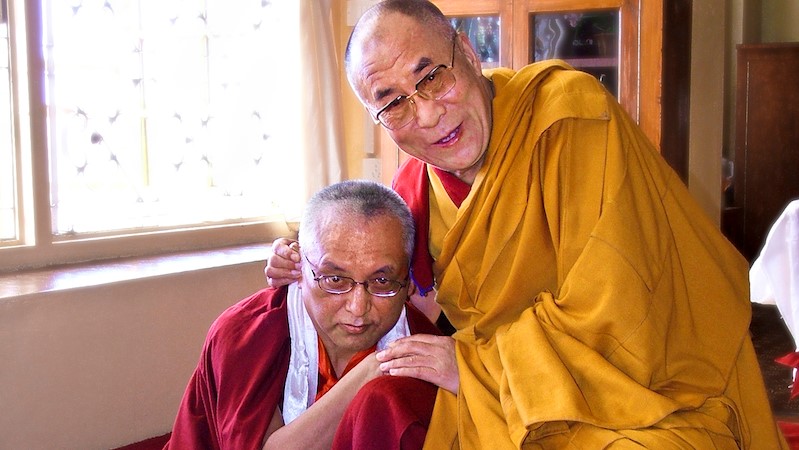On 10 April, the Vajrayana and broader Buddhist world exploded in scandal and mutual recrimination as a video surfaced of the Dalai Lama making a questionable solicitation. That the Internet and the global Vajrayana community have reacted so violently to this video is evidence of the cultural importance of His Holiness, and the (inaccurate) perception that he represents the entire Buddhist tradition, at least in the West.
Then, just yesterday, the Vajrayana community suffered the loss of Lama Zopa Rinpoche, who died after experiencing altitude sickness high up in the mountains of the Tsum Valley. My own sense is that if one reads between the lines of the initial news from the Foundation of the Preservation of the Mahayana Tradition (FPMT) website, it was a situation that could possibly have been avoided.
This has been a devastating week for practitioners and devotees of the Diamond Vehicle. Specifically, the Gelug school is now in a crisis (the Dalai Lama has been informed of Rinpoche’s final meditation), with a major organization with ties to the West suddenly leaderless and its most prominent figure having become the butt of some truly malicious and disgusting memes and jokes on social media.
Yet the legitimate questions that the Dalai Lama’s video raises, in the persistent context of ongoing scandals to do with sexual abuse in Vajrayana organizations, as well as Lama Zopa Rinpoche’s sudden departure, add to a sense of burgeoning crisis and accumulating misfortunes. Certain elements, far from being comfortable with “secular, universal” modernity as His Holiness himself tried to be, have demonstrated a remarkable defensiveness of Vajrayana’s perceived cultural uniqueness and its leaders’ near-superhuman perfection and infallibility. This makes moments of vulnerability like now particularly dangerous, as the organizations find themselves institutionally and ideologically brittle.
Back in 2018 His Holiness the Karmapa admitted to feeling lonely and depressed. I believe that it was an attempt to hint at underlying neuroses and problems among some of the most prominent lineage holders and the way their immediate circles – the most influential members of their courts – did decision-making.
Where there is crisis, there is opportunity, and this could be a transformative, watershed time for Vajrayana leaders open to the possibility of rethinking, reorientation, and even reform. This can happen only if Vajrayana Buddhists consider that we are perhaps at an inflection point in regard to Vajrayana Buddhism since the Tibetan diaspora – perhaps since His Holiness the Dalai Lama’s arrival in India in 1959. The diffusion of this tradition into the West since the 1960s to 2010s has to some extent lost the drive and power that sustained it up to now, and needs a change of direction.
There is no crystal ball, and things are not predetermined. It is therefore impossible to know, without initiative of body, speech, and mind, what will be next for the Vajrayana community, both in the Himalayas and in industrialized economies like East Asia and the West. But Vajrayana has every chance and reason to regain the vitality that made it perhaps the most widespread and well-known Vehicle in modern times.
See more
Lama Zopa Rinpoche has Entered His Final Meditation (FPMT)
Karmapa shares personal struggles, calls for reconciliation in his community (Lion’s Roar)
Related news from BDG
Revered Buddhist Scholar and FPMT Founder Lama Zopa Rinpoche Has Died
Dalai Lama Apologizes for Inappropriate Conduct with Young Boy
Related blog posts from BDG
His Holiness the 14th Dalai Lama: No one is sucking anyone’s tongue


